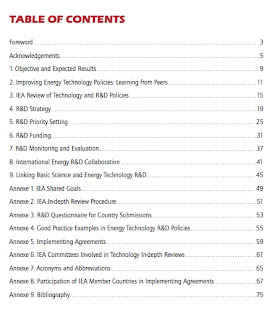OBJECTIVE AND EXPECTED RESULTS
The objective of this book is to further strengthen in-depth reviews of IEA member countries’ energy R&D policies and programmes by providing tools and guidance to review teams.
The ultimate objective is to improve the recommendations to IEA member countries on improved energy technology and targeted R&D policies and programmes. The book provides a framework for conducting R&D reviews and recommendations. It is not intended to be prescriptive, rather to serve as a consistent, logical and transparent process.
The ultimate objective is to improve the recommendations to IEA member countries on improved energy technology and targeted R&D policies and programmes. The book provides a framework for conducting R&D reviews and recommendations. It is not intended to be prescriptive, rather to serve as a consistent, logical and transparent process.
Some of the expected results are: to improve the capacity of review team members, experts and desk officers to conduct R&D and technology policy reviews; to ensure more consistent and streamlined energy technology R&D reviews to facilitate cross country comparisons and general conclusions; to maximise the output from limited resources spent on R&D in-depth reviews.
 The book contains a menu of tools, best practice examples and a list of questions for the review
The book contains a menu of tools, best practice examples and a list of questions for the reviewteam. The menu does not cover all issues relevant to reviewing government R&D policies – issues not touched upon in this book could also be of relevance for the review. Likewise not all issues are equally relevant in all countries. The menu is supposed to be a source for help, and not a check list where all issues should be covered in every in-depth review.
The primary target group is review team members, experts and desk officers participating in the in-depth reviews. But the information compiled and presented could be useful to others involved in reviews of technology policies and programmes.
The first two chapters describe the process and outputs of the IEA in-depth review process and
provide details on the review of technology and R&D policies. The last six chapters provide further background, check lists, questions, good practice examples and other tools as support to the review of six core elements of coherent and effective energy technology R&D policies:
- R&D strategy
- R&D priority setting
- R&D funding
- R&D monitoring and evaluation
- International R&D collaboration
- Linking basic science and energy technology R&D
It is not possible to cover all subjects in detail and this book only provides a first tool box. Important issues – like linking energy R&D with deployment policies and commercialisation – will only be touched upon briefly, but will be further analysed in a forthcoming book from IEA on R&D policy.
FREE DOWNLOAD:

FREE DOWNLOAD:

Technorati: